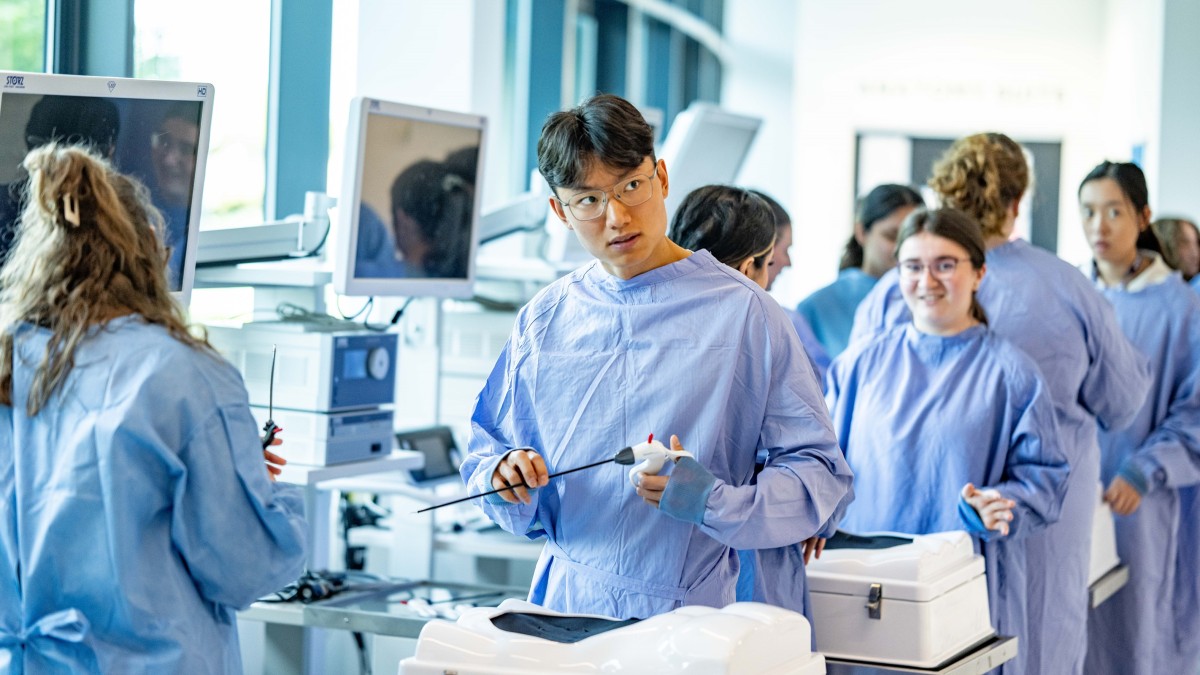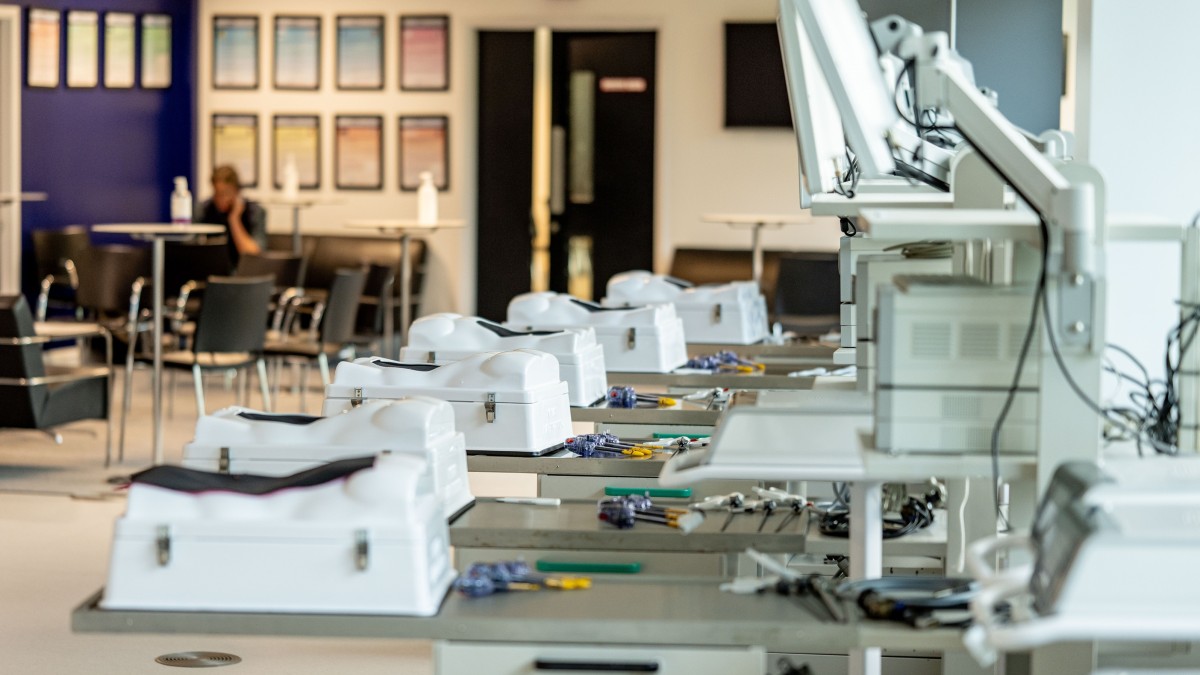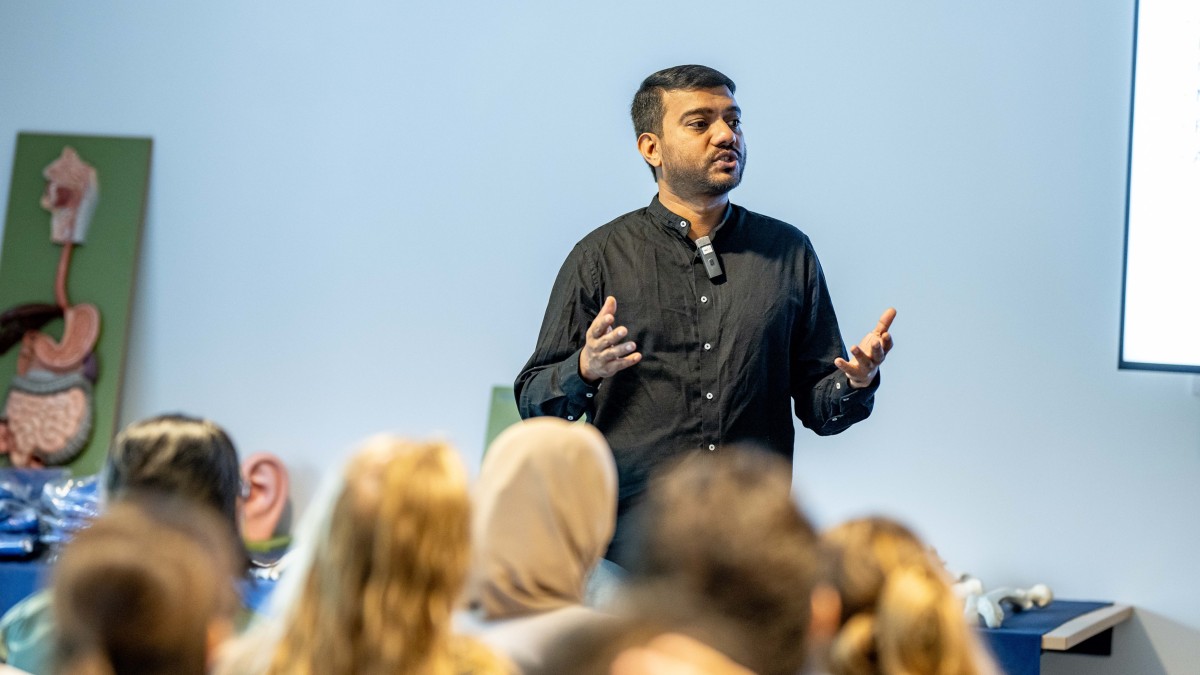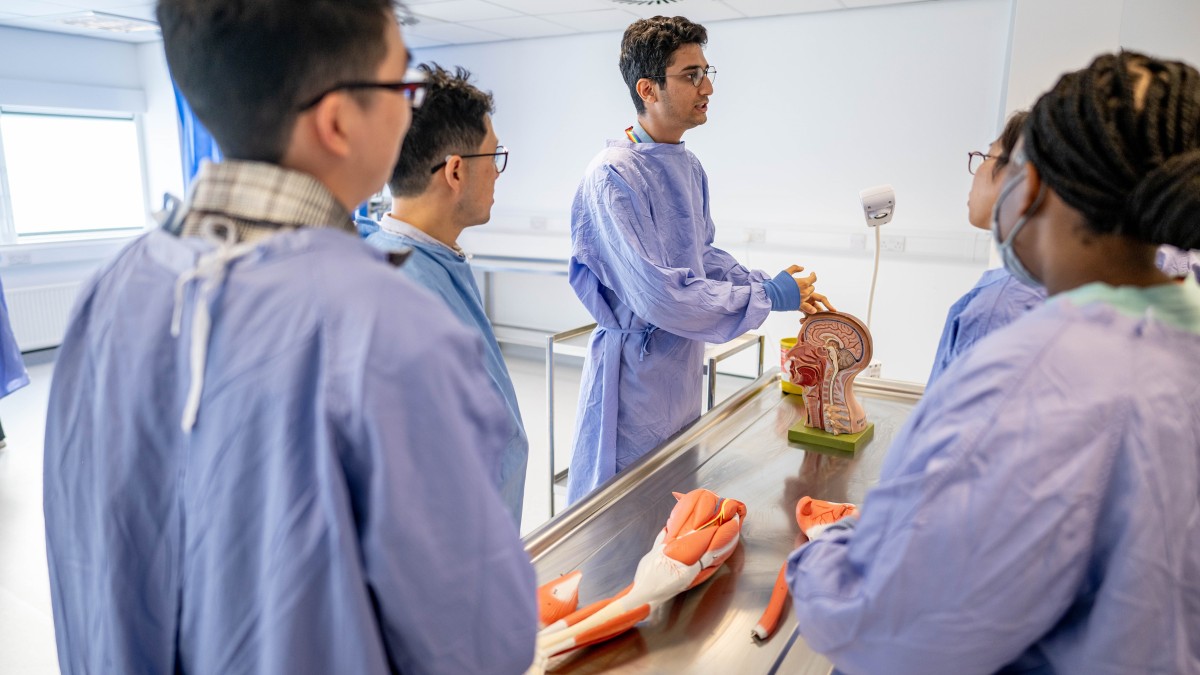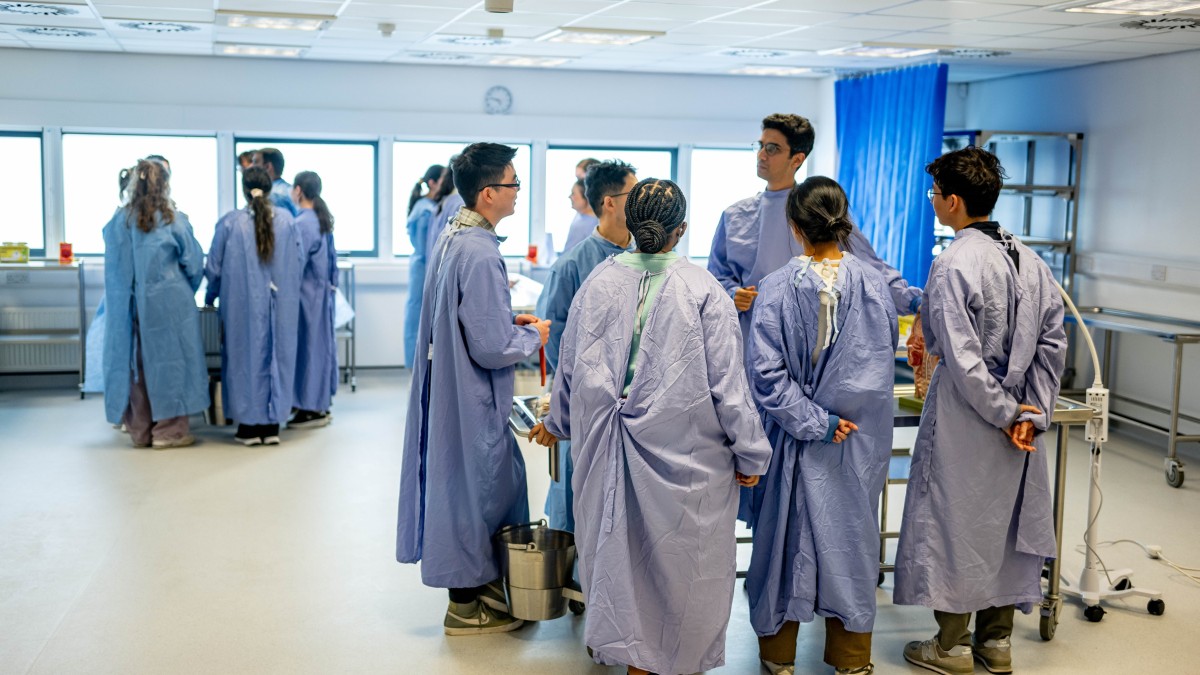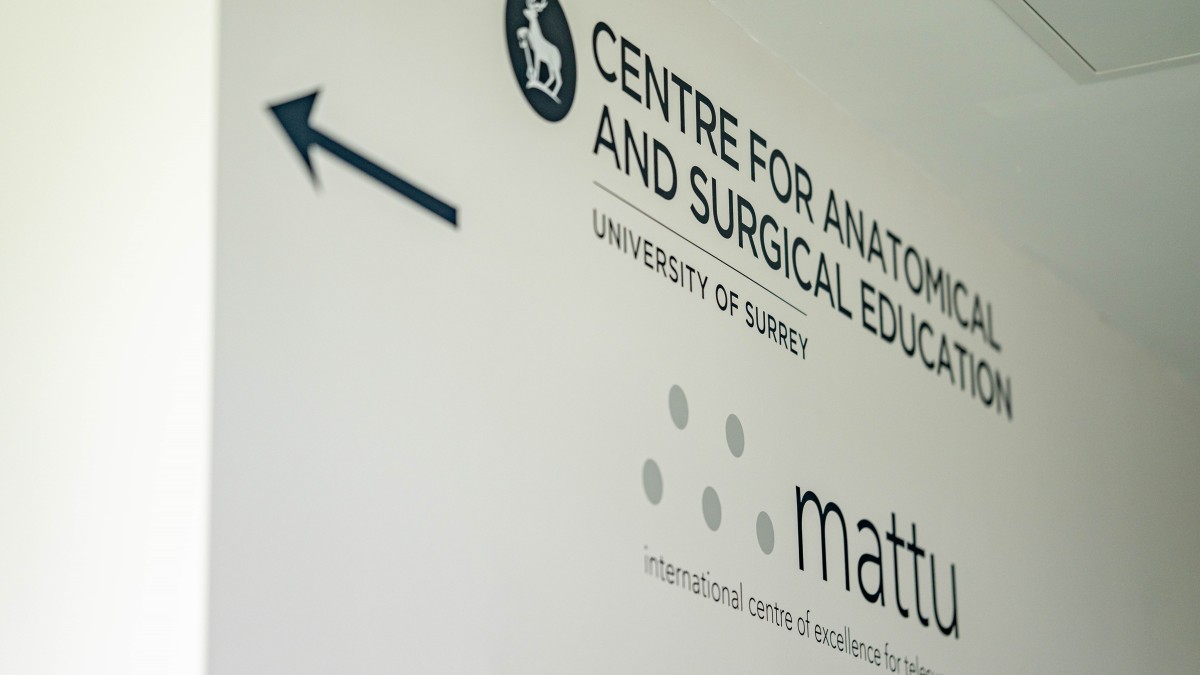University of Surrey’s School of Medicine anatomy facilities open for business
A brand-new facility dedicated to anatomy and surgical teaching for the new School of Medicine has welcomed its first cohort of students. The Centre for Anatomical and Surgical Education (CASE) is a state-of-the-art learning space, offering access to the latest high-tech equipment and cutting-edge surgical techniques under the guidance of expert teaching staff.
CASE is designed to facilitate a diverse range of integrated teaching methods and tools. Expertly dissected cadaveric prosections, human bones, anatomical models, surface anatomy, 3D anatomy software, ultrasound anatomy, medical imaging and histopathology are all available to provide a rich learning environment. Students can also participate in full body dissections as part of their special study units, an opportunity which is becoming less common in some UK medical schools.
CASE’s central teaching space is the anatomy suite, licensed under The Human Tissue Act 2004 and regulated by the Human Tissue Authority. It includes a spacious dissection room, cadaver storage and preparation areas, and embalming facilities. Students will carry out anatomical examinations and study expertly dissected prosections and human bones. It is also equipped with multiple display screens and an overhead camera, allowing for detailed group teaching.
Adjacent to the anatomy suite is the anatomy seminar room, a dedicated space for lectures and seminar-based teaching, featuring a variety of plastic anatomical models and bones. It is also suitable for surface anatomy and ultrasound teaching, providing a comprehensive learning environment.
Collaboration is a key aspect of CASE’s approach. The Centre will work closely with the Minimal Access Therapy Training Unit (MATTU), giving access to a variety of surgical simulation options and a live link to the operating theatre. A truly immersive learning experience is made possible through its partnership with Virtual Reality in Medicine and Surgery (VRiMS). Students will use virtual reality headsets embedded with 3D anatomy software to learn different surgical techniques, with access to a library of cadaveric surgical training videos. The technology and collaborative nature of the facilities available combine a high-quality teaching environment with the opportunity to prepare medical students for the futuristic medical facilities which are already becoming part of day-to-day medicine.
Teaching at CASE is supported by a team of clinical anatomists, radiologists and surgeons, ensuring that Surrey’s students receive expert instruction and reflecting the interdisciplinary team approach to teaching which is embedded throughout the Surrey Medicine course. Since opening, the Centre has already hosted a variety of specialised surgical courses, including endoscopic heart valve surgery (sponsored by Heart Research UK), head and neck dissection courses and transplant surgery. It also supports anatomical and surgical research projects.
Surrey’s School of Medicine officially opened in September 2024, welcoming a cohort of over 30 international students. For 2025 entry, the UK government has awarded 34 funded places for home students, a significant proportion of the 350 places shared across more than 30 medical schools nationally.
CASE is deeply grateful for the generosity of the public who donate their bodies for medical education and research. Their contributions are essential in enabling the Centre to provide high-quality cadaveric education, which is crucial for the training of future medical professionals.
Find out more about our Medicine (Graduate Entry) BMBS course.
